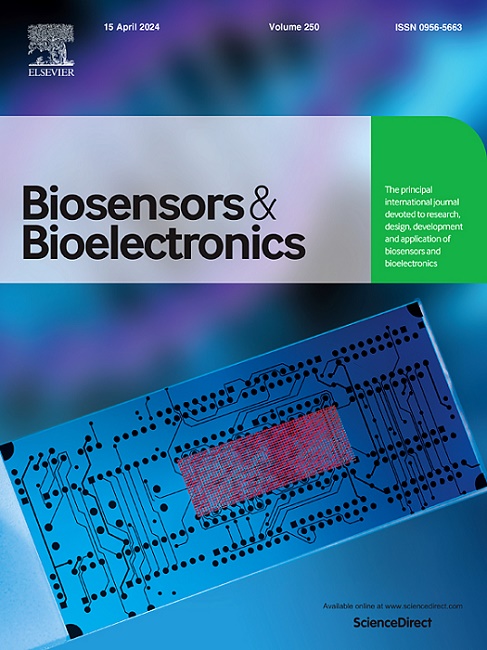Microbial biofilm-based hydrovoltaic pressure sensor with ultrahigh sensitivity for self-powered flexible electronics
IF 10.7
1区 生物学
Q1 BIOPHYSICS
引用次数: 0
Abstract
Developing the integration of self-powered detection with both dynamic and static forces is a significant challenge in promoting intelligent technology systems. Herein, we introduce an innovative microbial biofilm based-hydrovoltaic pressure sensor (mBio-HPS) using whole-cell Geobacter sulfurreducens, which successfully combines self-powered functionality and static pressure detection within a single device. The mBio-HPS exhibited a sensitivity of up to 8968.7 kPa⁻1 (at 1 kPa) in the 0.4–25 kPa regime without external power supply. Moreover, the mBio-HPS demonstrated the fastest reported response speed to date, with a remarkable response time of 112.5 μs, enabling effective detection of both dynamic and static forces while maintaining stability during an extensive 30,000 s testing. Experimental validation using a sensor-integrated array showed its outstanding real-time detection capabilities for both dynamic and static pressure, highlighting its outstanding potential for electronic skin applications. This unprecedented concept of a hydrovoltaic pressure sensor also offers new insights into the development of high-performance self-powered electronics.
求助全文
约1分钟内获得全文
求助全文
来源期刊

Biosensors and Bioelectronics
工程技术-电化学
CiteScore
20.80
自引率
7.10%
发文量
1006
审稿时长
29 days
期刊介绍:
Biosensors & Bioelectronics, along with its open access companion journal Biosensors & Bioelectronics: X, is the leading international publication in the field of biosensors and bioelectronics. It covers research, design, development, and application of biosensors, which are analytical devices incorporating biological materials with physicochemical transducers. These devices, including sensors, DNA chips, electronic noses, and lab-on-a-chip, produce digital signals proportional to specific analytes. Examples include immunosensors and enzyme-based biosensors, applied in various fields such as medicine, environmental monitoring, and food industry. The journal also focuses on molecular and supramolecular structures for enhancing device performance.
 求助内容:
求助内容: 应助结果提醒方式:
应助结果提醒方式:


